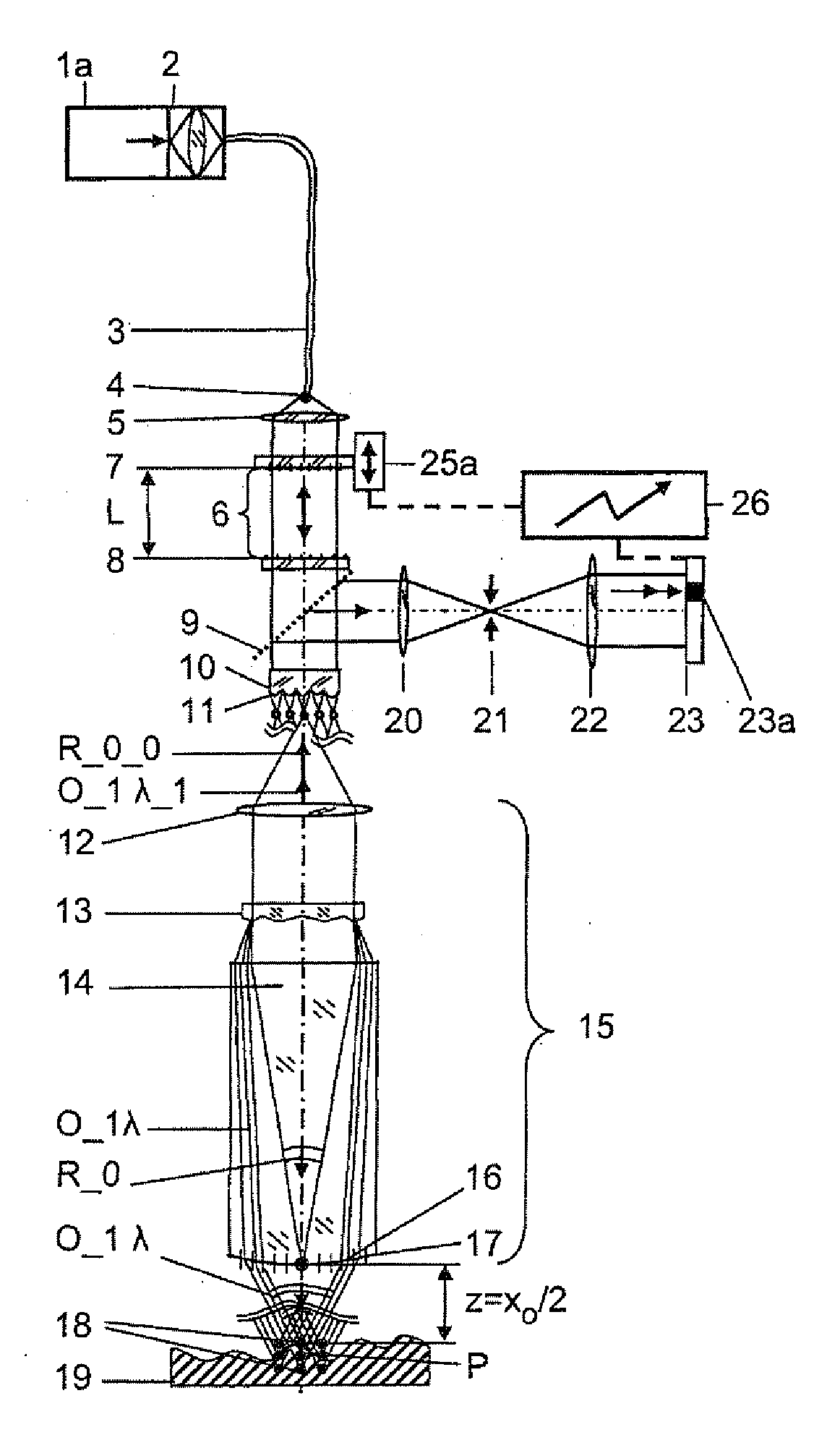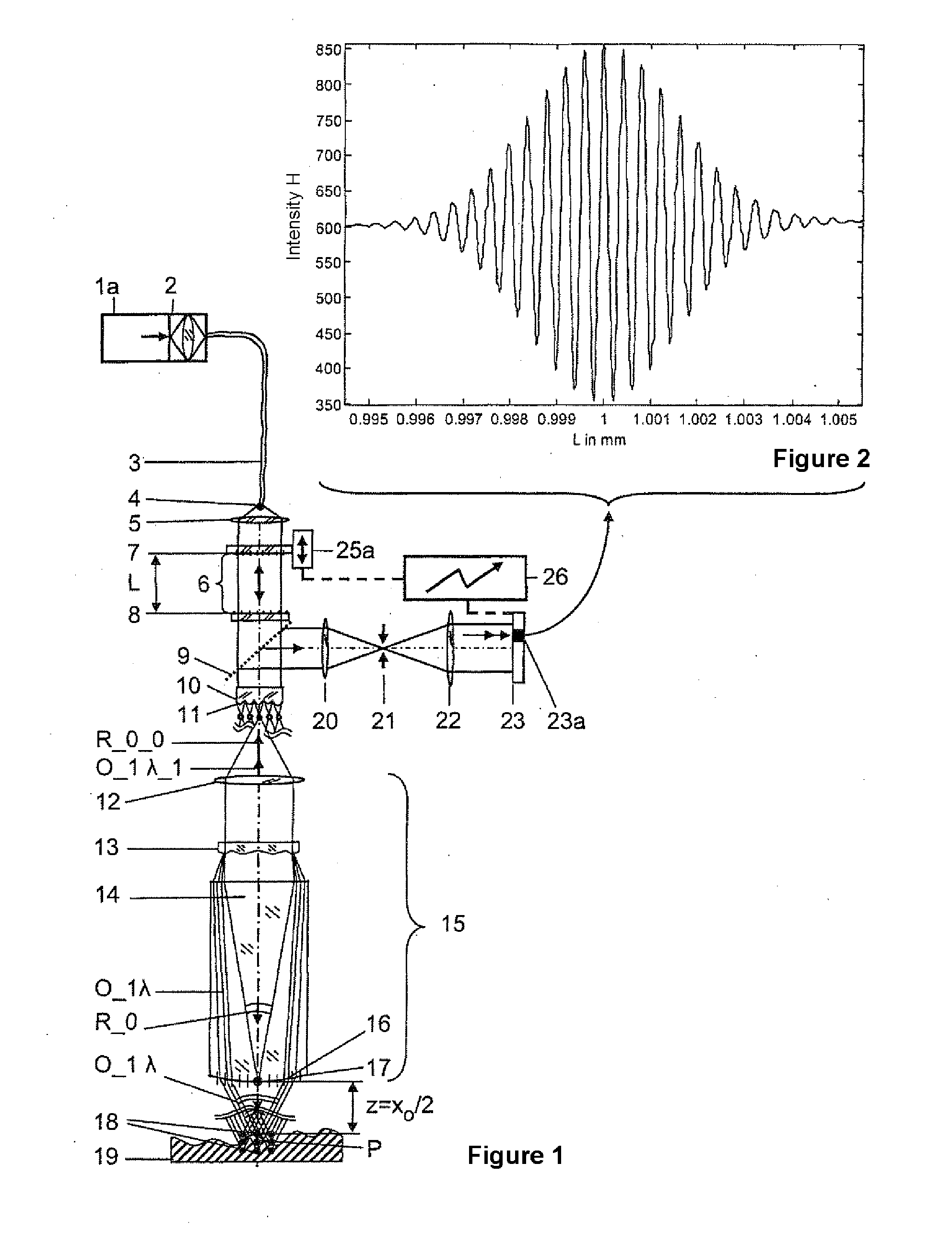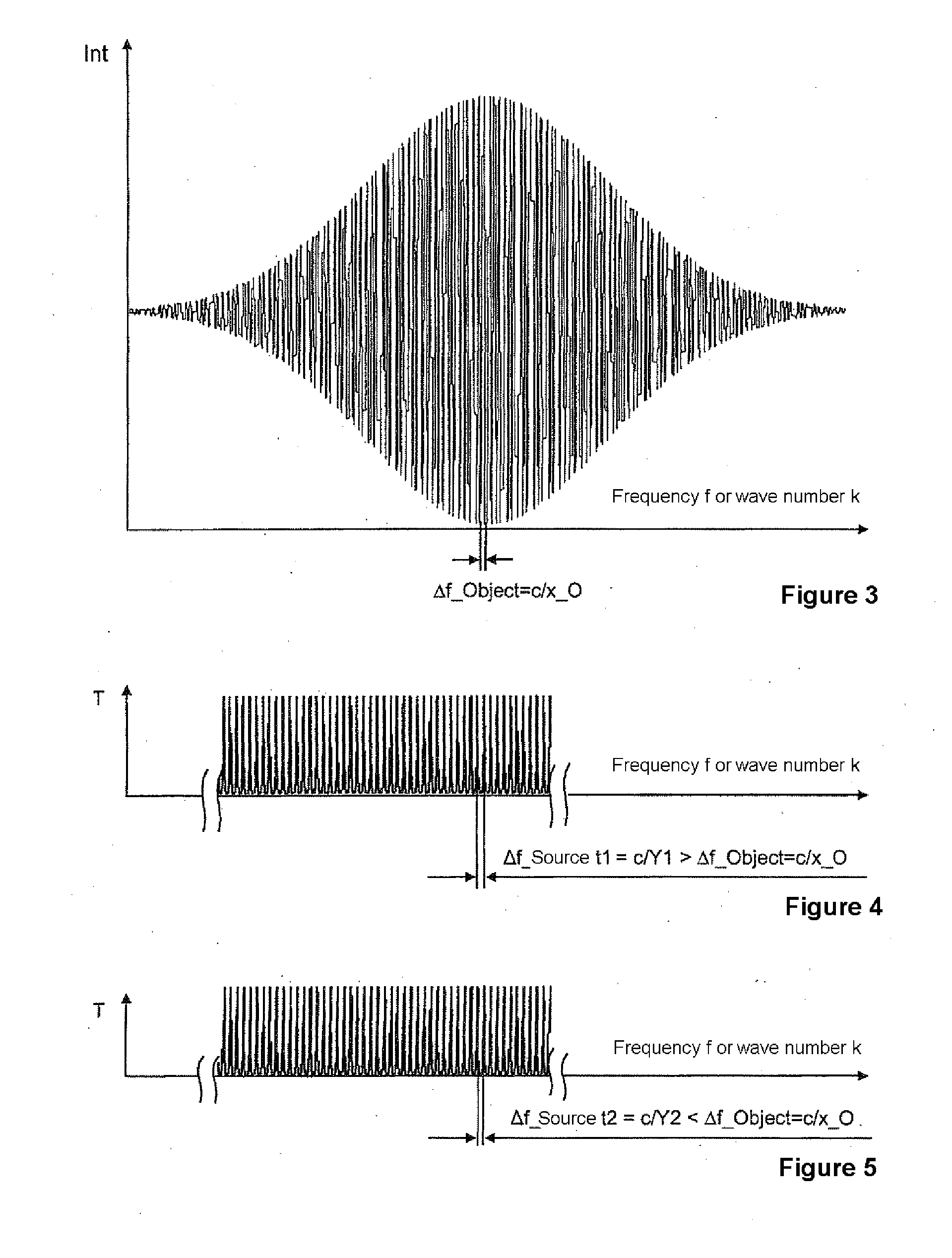Method and apparatus for interferometry
a technology of interferometry and methods, applied in the field of methods and apparatus for interferometry, can solve the problems of inability to scale up the resolution capability and depth measurement range of the applicator, the multiplicity of technical problems, and the high cost, and achieve the effect of high measurement and scanning accuracy and high degree of technical complexity
- Summary
- Abstract
- Description
- Claims
- Application Information
AI Technical Summary
Benefits of technology
Problems solved by technology
Method used
Image
Examples
Embodiment Construction
[0222]The invention will be described by way of example with reference to the preferred embodiments illustrated in FIGS. 1 to 26. In this case, the term light is always used synonymously for electromagnetic radiation from the Terahertz, through the infrared, to the deep UV spectrum.
[0223]FIG. 1 shows the sensor on the basis of a chromatic-confocal, spectral two-beam interferometer with a multi-beam interferometer arranged downstream from the light source, for a relatively small object field with respect to the focal length of the object-imaging system. The light from an optically powerful, fiber-coupled superluminescence diode 1a in the near infrared range is injected by means of focusing optics 2 into a single-mode fiber 3, emerges from this single-mode fiber 3 again at its outlet 4, is collimated by an objective lens 5 and is passed into a Fabry-Perot interferometer 6, in this case in the form of a Fabry-Perot interferometer 6 with the mirror separation L, with which a piezo-contr...
PUM
 Login to View More
Login to View More Abstract
Description
Claims
Application Information
 Login to View More
Login to View More - R&D
- Intellectual Property
- Life Sciences
- Materials
- Tech Scout
- Unparalleled Data Quality
- Higher Quality Content
- 60% Fewer Hallucinations
Browse by: Latest US Patents, China's latest patents, Technical Efficacy Thesaurus, Application Domain, Technology Topic, Popular Technical Reports.
© 2025 PatSnap. All rights reserved.Legal|Privacy policy|Modern Slavery Act Transparency Statement|Sitemap|About US| Contact US: help@patsnap.com



